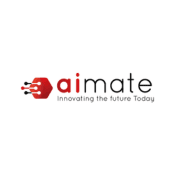
27-Sep-2023
50
1

Transitioning to a paperless environment is a crucial step in the journey of digital transformation. Companies stand to gain numerous advantages by reducing their reliance on paper and embracing digital mediums for tasks like sharing information, note-taking, invoice creation, and more. A pivotal technology driving document digitization is Optical Character Recognition (OCR).
**Understanding OCR Technology and Its Functionality:**
OCR technology serves the purpose of converting text contained within images into a readable and editable text format. By employing an OCR reader, documents in image format—whether they be receipts, invoices, reports, or any other type—can be scanned. It's worth noting that OCR has its limitations; it cannot transform text into an editable format. Instead, it converts the content within the image into plain text data.
The OCR conversion process initiates with image acquisition, where a scanner captures an image and transforms it into binary data. During this step, the scanner distinguishes light areas as the image's background and dark areas as text. Subsequently, the image undergoes a cleaning process to rectify any errors and enhance readability. Cleaning techniques include deskewing, despeckling, eliminating boxes, and recognizing script.
The next phase involves employing one of two applicable algorithms: Pattern Matching and Feature Matching. Pattern matching entails matching each character (referred to as a glyph) with stored glyphs to reconstruct the image in its digital form.
**The Role of OCR in Document Digitization:**
As we progress further into the digital transformation era, various technologies and systems are emerging to replace traditional paper-based processes. OCR is a technology that streamlines the laborious tasks of manual data entry and digitization. Here's how OCR expedites the document digitization process:
1. **Spell Checking:** OCR programs include built-in spell checkers to identify errors and uncertainties in the image before converting it into a readable format. These programs often utilize different spell-check systems and databases, enabling quick error correction.
2. **Comprehensive Analysis:** OCR programs conduct thorough analyses of paper documents, sometimes even employing functionalities akin to those found in word processing software to perform sentence-level spell checks. They can also expand their dictionaries to include new and specialized terms for improved relevance.
3. **Media Optimization:** OCR programs possess built-in systems to enhance media data and information quality. They achieve this by optimizing media for better clarity and visibility. Typically, black and white line images are saved in GIF and PNG formats, while black and white photographs are saved in GIF or JPEG formats, and color photographs in JPEG format.
To harness the benefits of OCR technology, companies must set up the necessary infrastructure.
**Benefits of OCR for Document Digitization:**
OCR brings a host of advantages to businesses engaged in document digitization:
1. **Space Savings:** Digitizing documents with OCR can save significant physical storage space. Just 1 MB of storage can accommodate 500 pages of printed text.
2. **Enhanced Security:** Unlike paper documents, digitized versions can be protected with passwords, and access can be tracked through log files, providing enhanced security.
3. **Ease of Access:** Digitized documents can be accessed from anywhere in the world, and users can easily search for specific documents stored on a central server.
4. **Cost Savings:** Storing, handling, and preserving physical documents incurs higher costs than digitization. Digital documents are also less susceptible to physical degradation, though they do require robust cybersecurity measures.
**The Convergence of OCR, Deep Learning, and AI in Document Digitization:**
When integrated with deep learning systems, OCR processes gain even more efficiency and accuracy. Deep learning mechanisms excel at extracting both structured and unstructured data from images, automating the digitization process and reducing the potential for human errors. Machine learning tools and services are available to accelerate text extraction across various layouts.
Within OCR programs, image recognition tools have also emerged, expediting the identification and annotation of images. These tools can either be integrated into OCR solutions or serve as built-in features.
**In Conclusion:**
Optical Character Recognition (OCR) technology is playing a pivotal role in facilitating the transition from physical to digital documentation. With a wide array of tools available, organizations can choose those that best align with their requirements for seamless document digitization. Aimate's OCR, powered by Machine Learning services, offers a high-quality solution for converting text data into a machine-readable format, enabling a smooth digital transformation process.
Stay informed and never miss out on future updates by subscribing to our newsletter or notifications.